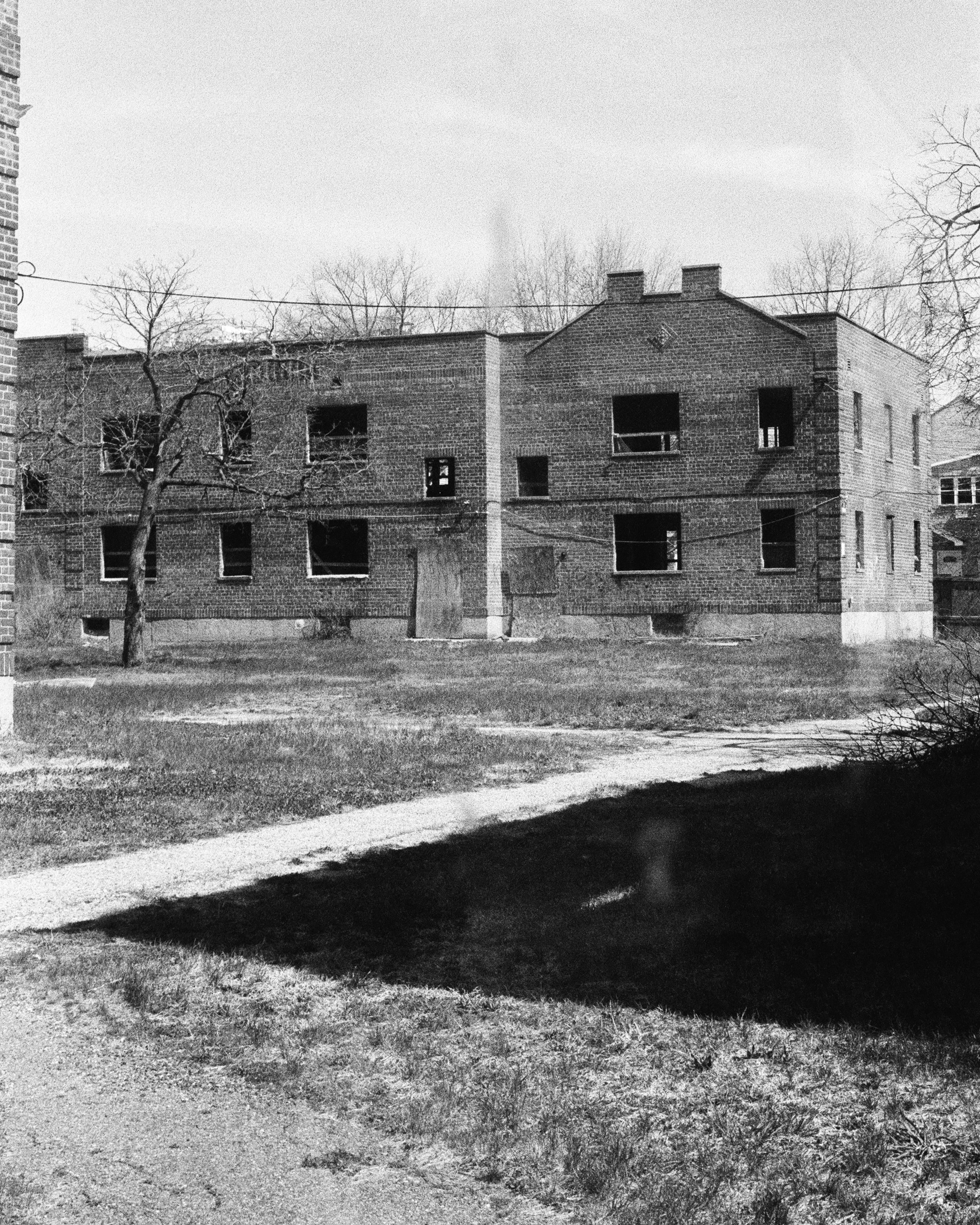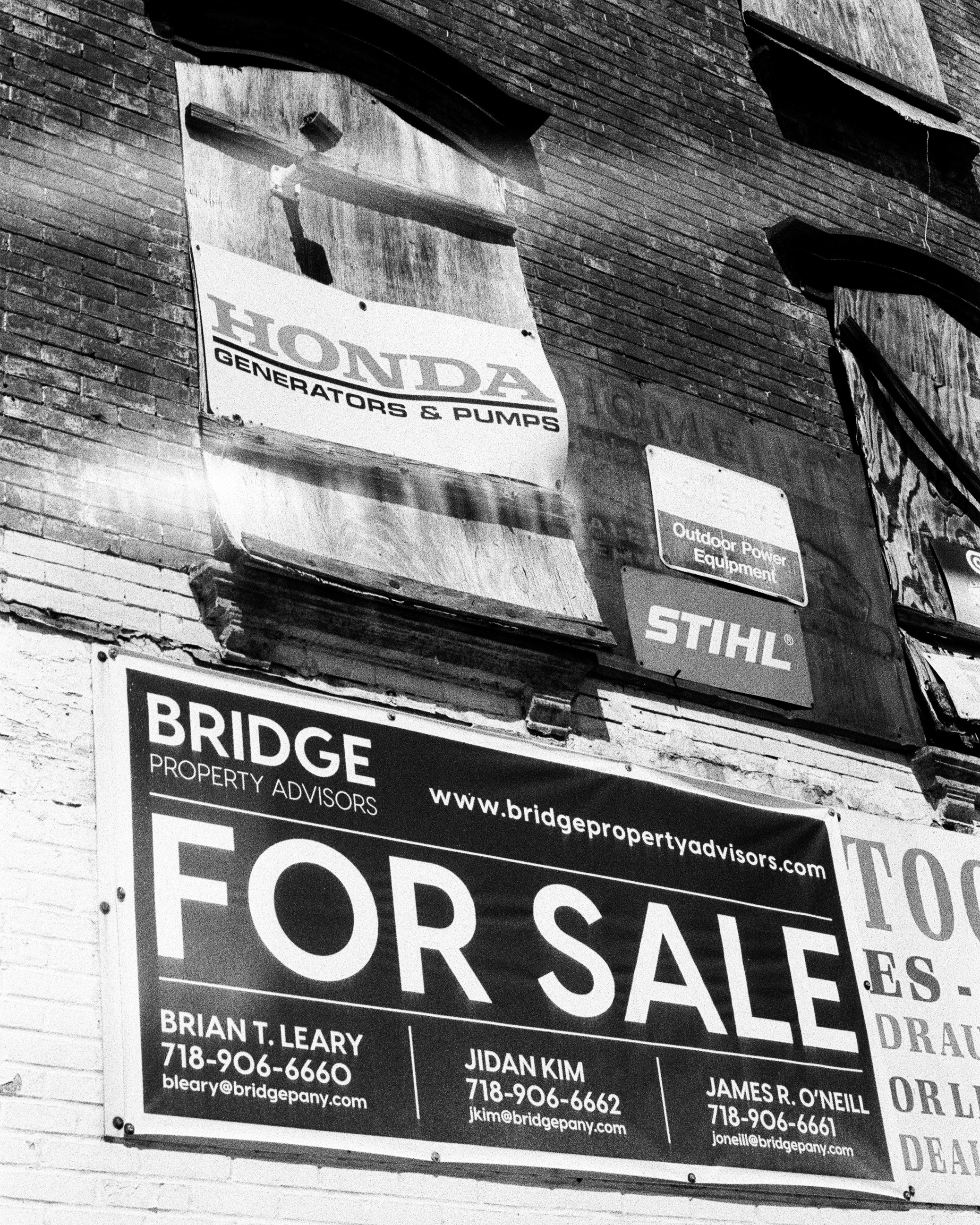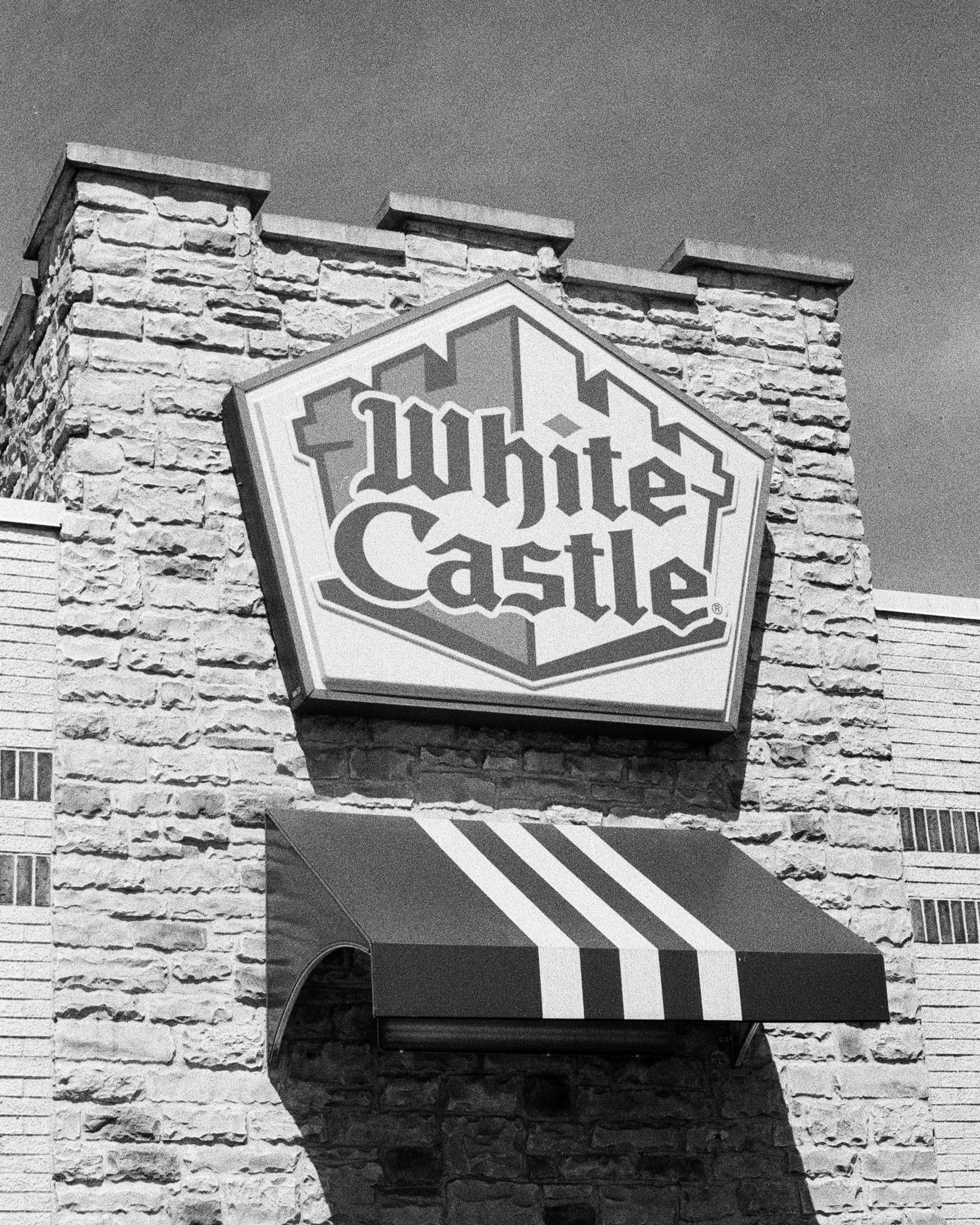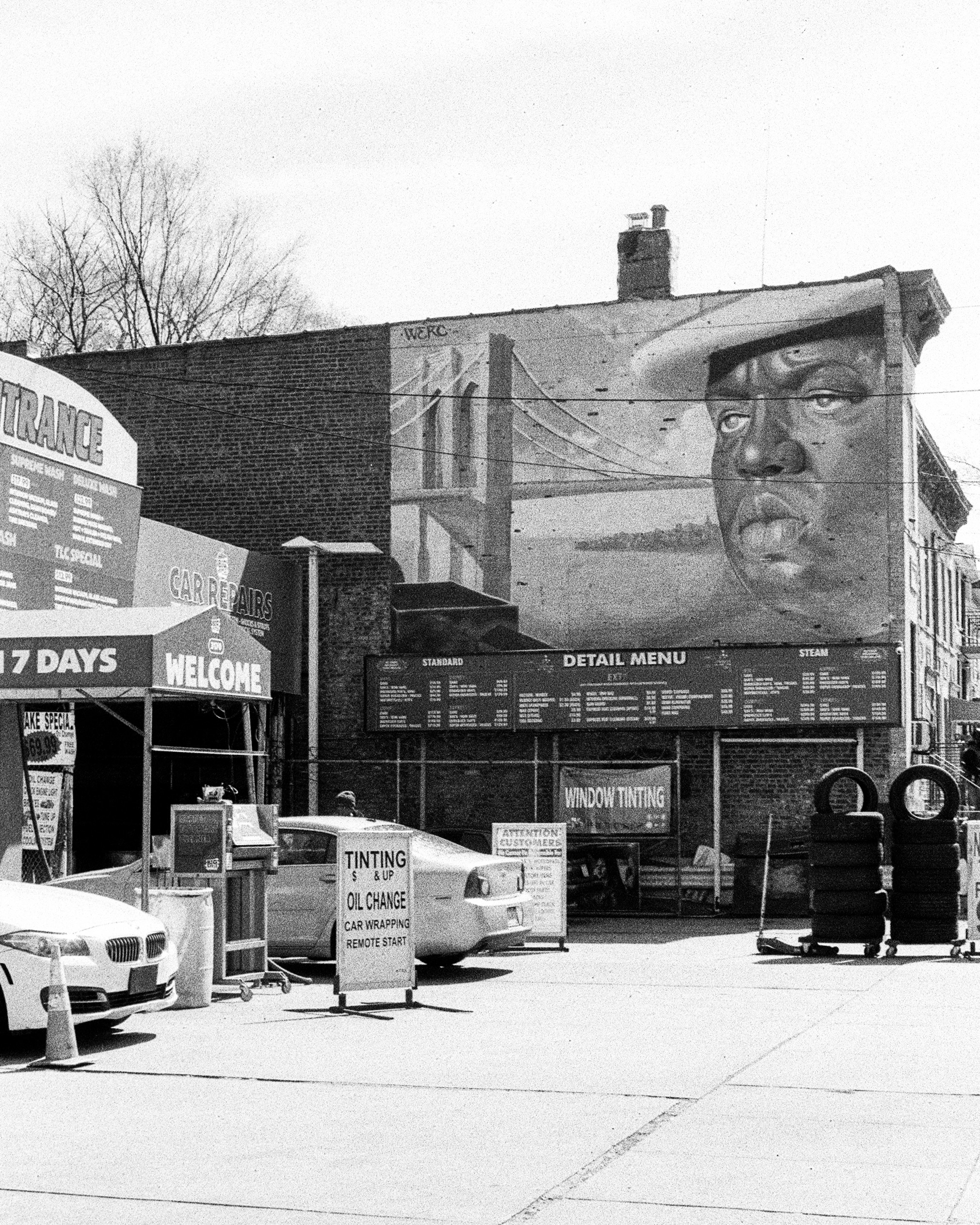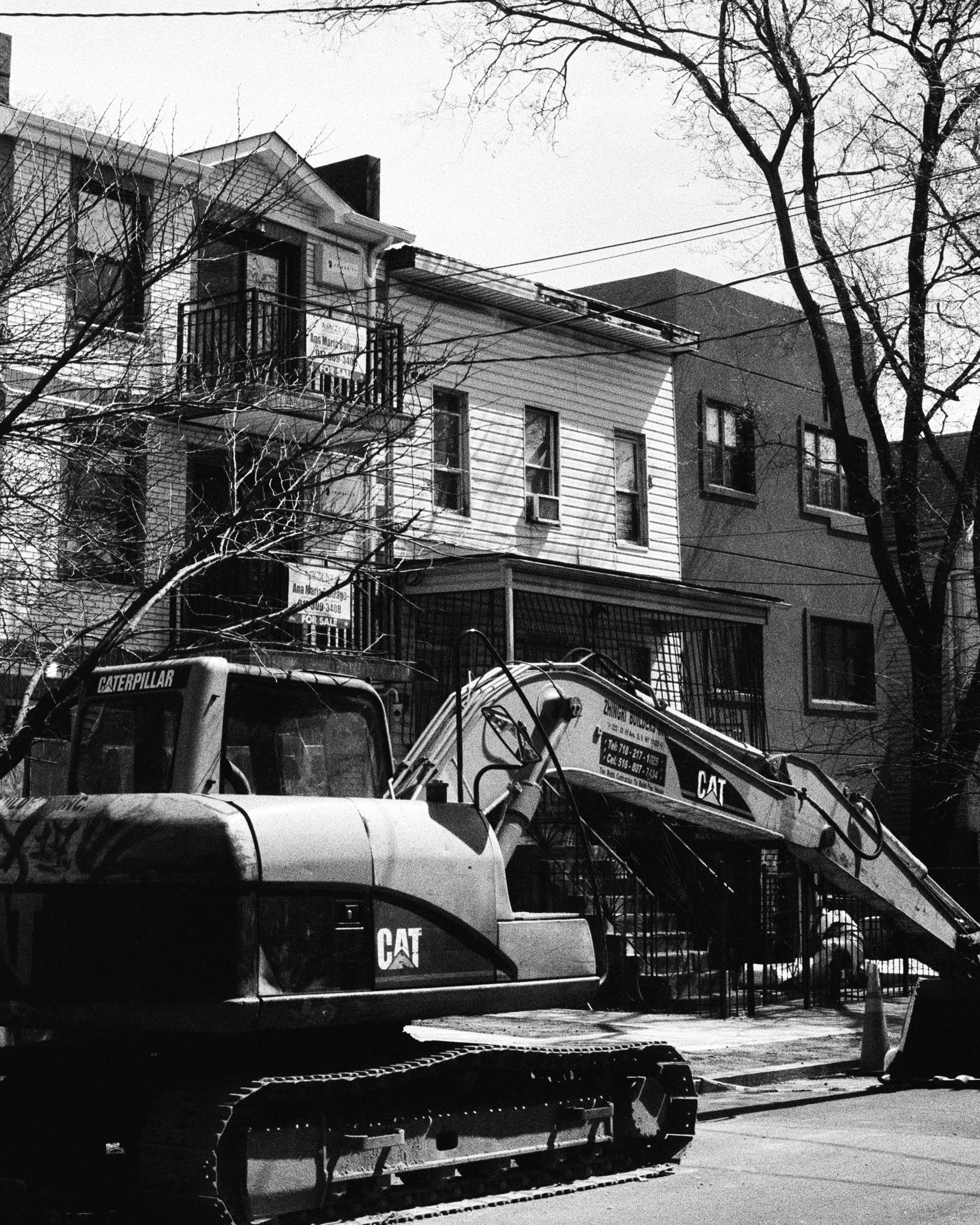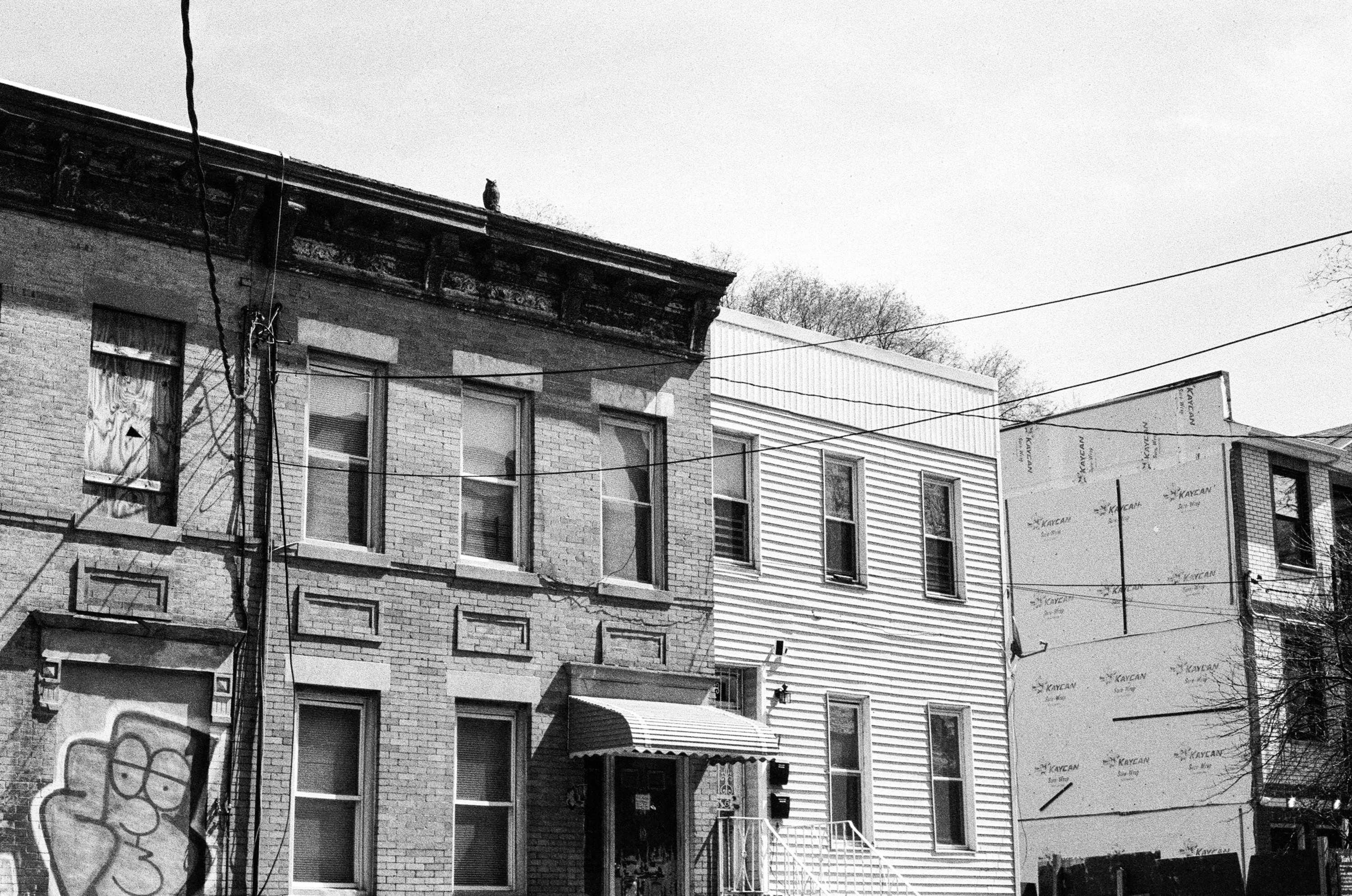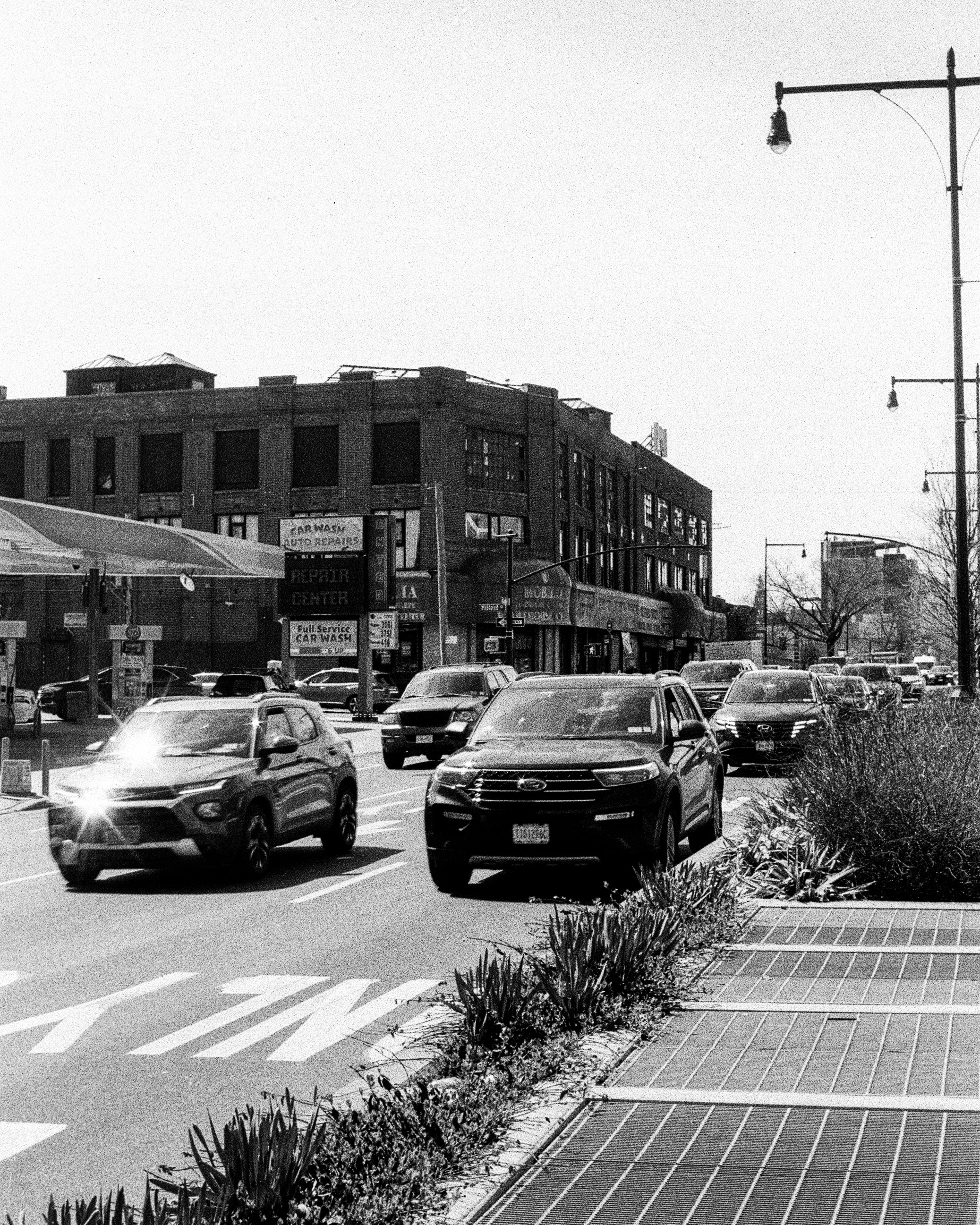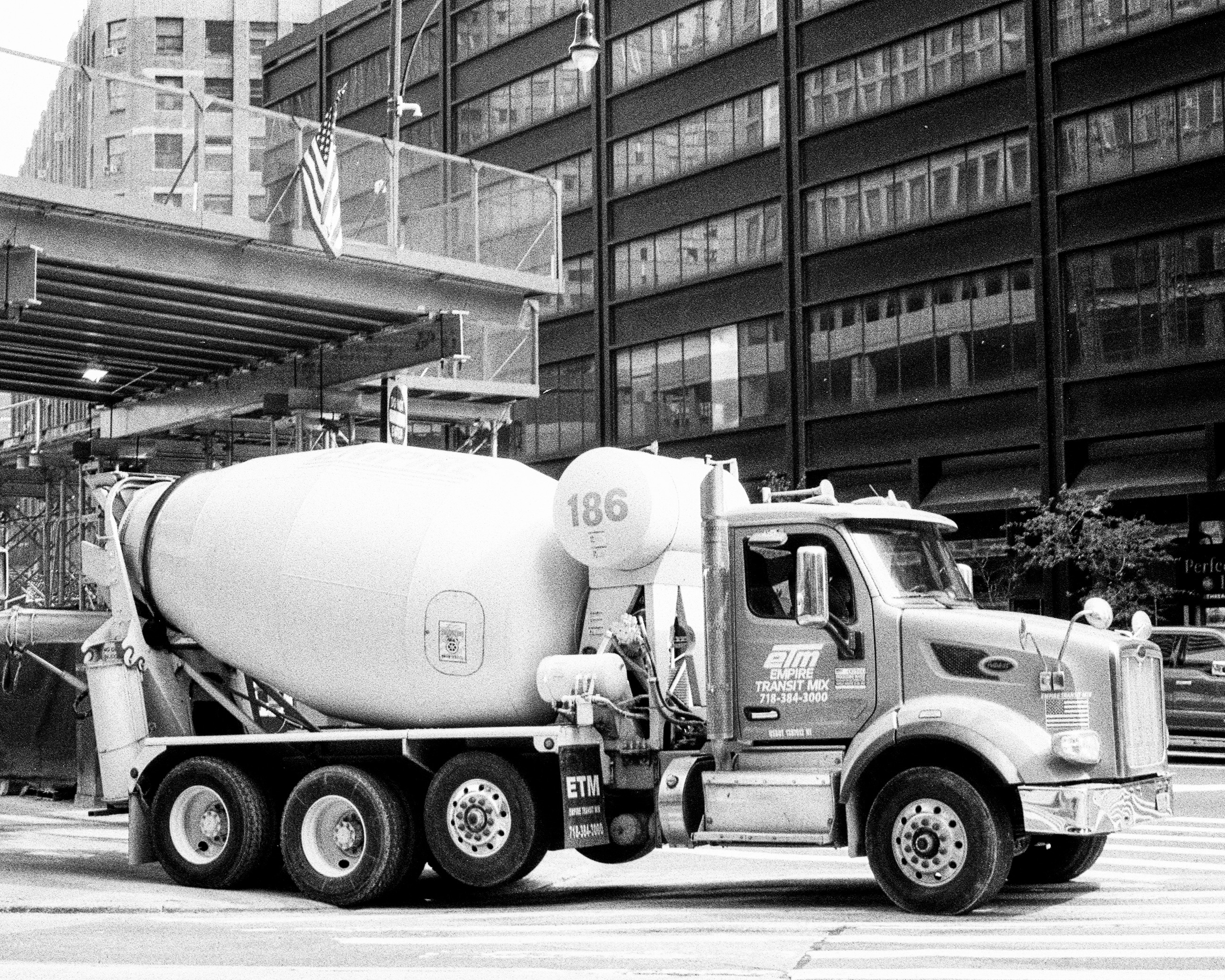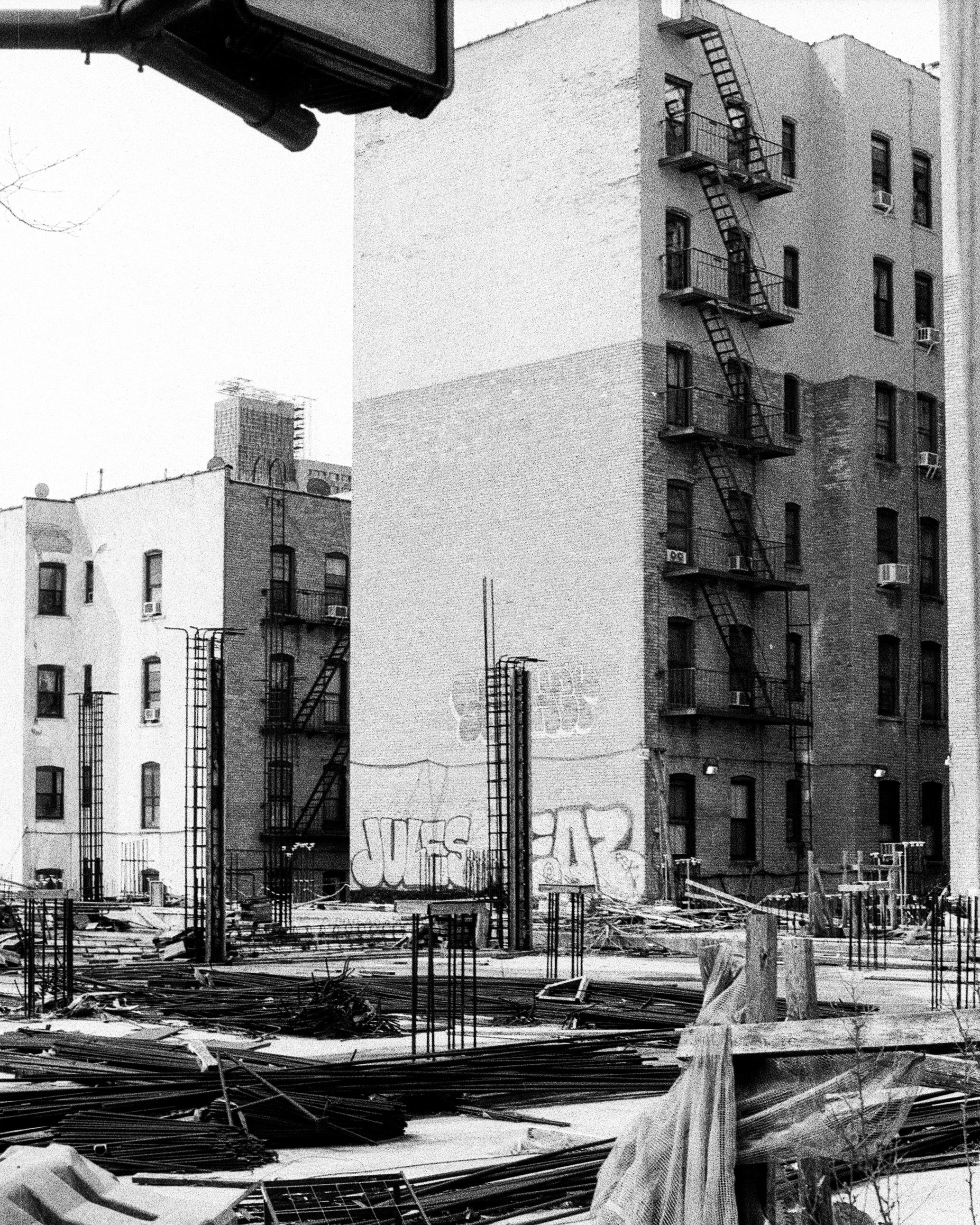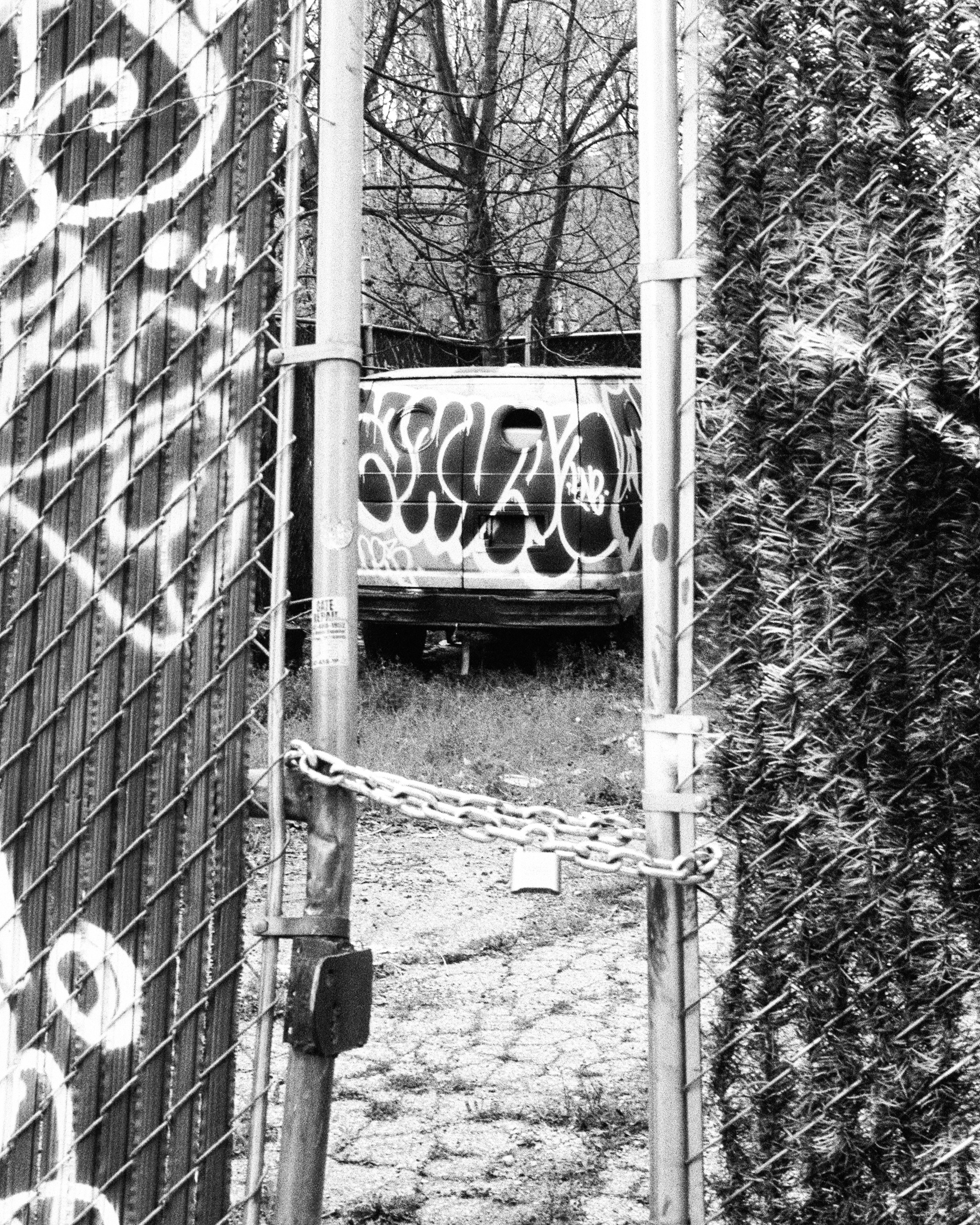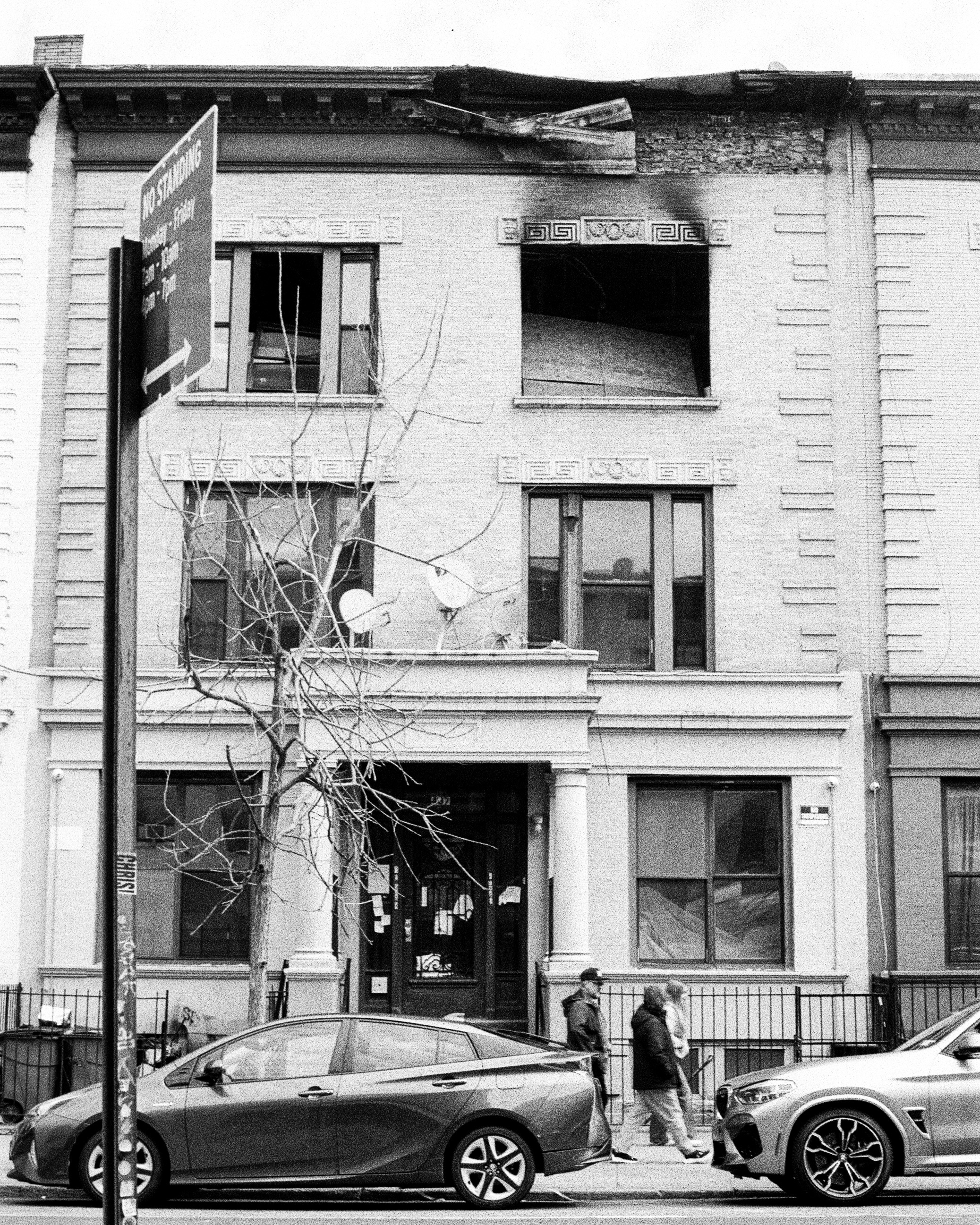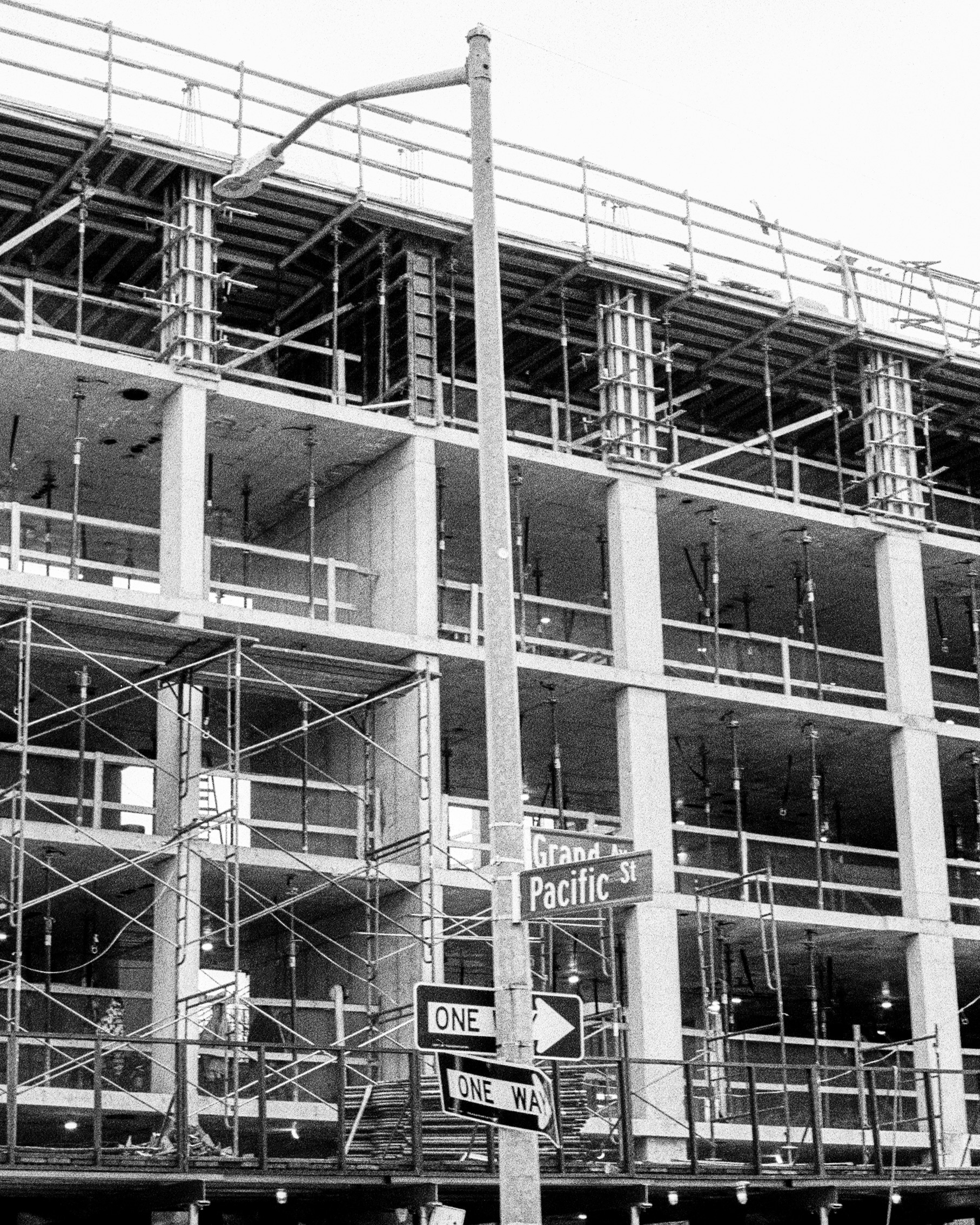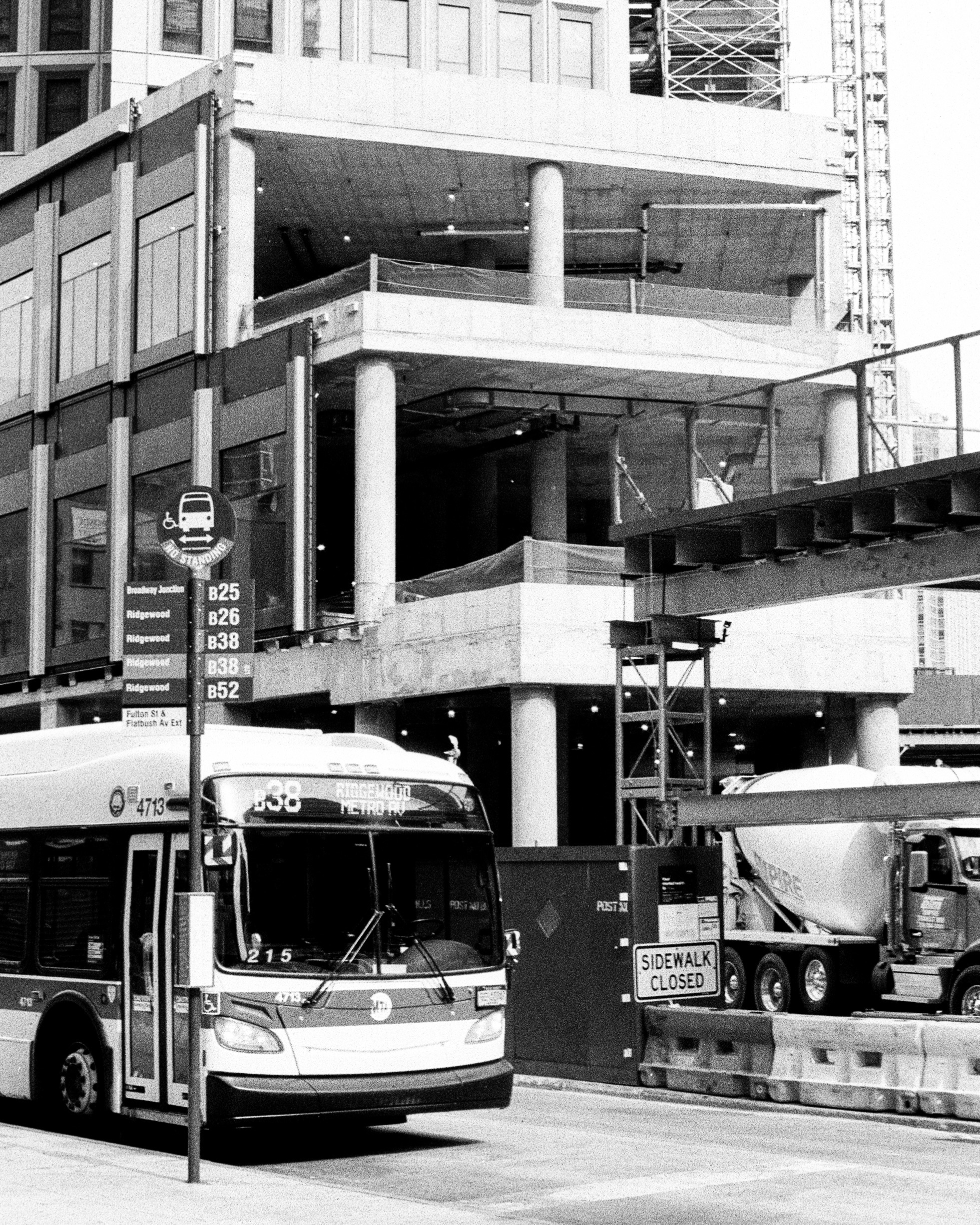Nolen Phya
Photos taken on Yashica FX-3
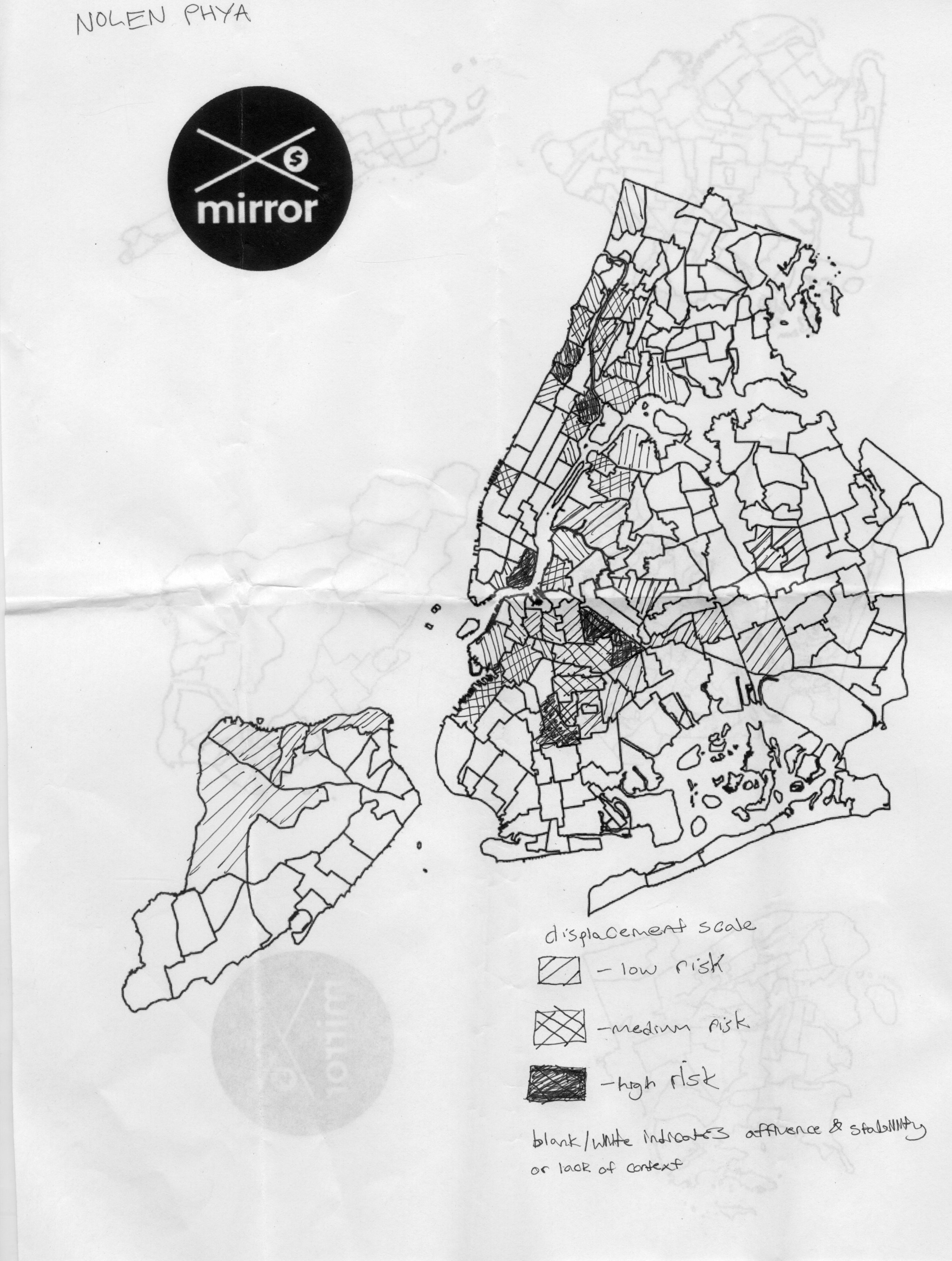

As the lead for this project, I didn’t get to spend nearly as much time as I would have liked to in the field. In addition, I was physically split between New York City and Boston as I was wrapping up my Masters program (which this project was part of). I only really had a few weeks in the Spring to take photos in the city. Despite that, I still managed to get outside and document places that I already knew plus places I hadn’t really explored before.
One of the big moments that combined both of those experiences for me was the photowalk I led for the group through Cypress Hills, East NY and the tip of Queens. We managed to make it to Arlington Village, a subsidized housing community just off Atlantic Avenue in Brooklyn before it turns into Queens. I had never been around the actual site before, even though I’ve passed it many times. To explain how I got there, I have to explain that we had started the tour in Cypress Hills at the library there (which I’ve studied at before) and walked southeast towards Atlantic Avenue. I wanted to go that route to show the transition from one neighborhood to another and how the Atlantic Avenue corridor was rapidly changing.
Atlantic Avenue is a major thoroughfare in Brooklyn and Queens that was widened by Robert Moses himself to accommodate more cars coming from Brooklyn, Queens and beyond coming into the city. Because of this, there are a large number of car shops, gas stations, and other automotive related businesses that extend down the avenue from start to finish. Many of these businesses have started to pack up in the last few years, maybe because of bad business, but most likely because of a consequential rezoning the city did of the area in 2016.As part of that rezoning, Atlantic Avenue from Pennsylvania Ave to Fountain Ave was specifically turned into a “Growth Corridor”, a space that allows mixed-use development with new affordable housing, retail, businesses and community facilities.The Arlington Village is squished in between this space and a designated “Mixed Use Corridor” planned south of Atlantic on Liberty Ave.
Despite all the new development happening around Arlington Village, the site itself is in quite a contrasting shape. On the East Side of the campus are the empty hollowed out buildings that you see in Figure 11.3 and 11.4. What was once a vibrant community for low and middle income New Yorkers has crumbled because of market speculation. In 2015 a group of investors purchased Arlington Village ahead of the 2016 rezoning, intending to redevelop it with the rest of the neighborhood. Residents of the village protested, and as a result of the development was left out of the zoning. However, without redevelopment as an incentive to continue investment, the property owners have left the site to fall into disrepair.
They simply repainted and did minor improvements on the west side of the site while leaving the east side to falter and sit vacant. This sits on top of earlier disinvestment that happened during the 1970s and 1980s during White Flight. Currently, the developers are fishing for another rezoning that will allow them to wipe the site clean and build a 14-story high rise, some of which will contain affordable housing, but mostly market rate units. Whether or not the zoning will be approved is to be determined.
If you ask me, what Arlington Village represents is the newest iteration of redevelopment in NYC in the sense that now not even long standing affordable housing communities are safe from the threat of change. Decades of disinvestment in the most affordable housing options are revealing themselves as many affordable apartments and buildings built literally a hundred years ago need to make repairs to continue viability. Without money, those repairs aren’t possible and that’s when the developers such as the ones at Arlington come into the picture.
